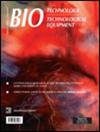In vitro and in silico inhibition performance of choline against CYP1A2, CYP2D6 and CYP3A4
IF 1.5
4区 生物学
Q4 BIOTECHNOLOGY & APPLIED MICROBIOLOGY
引用次数: 0
Abstract
Abstract Choline is an essential nutrient involved in the synthesis of acetylcholine in the cholinergic neurons. The pharmacokinetic properties of choline are well described; however, there is a lack of data about its activity toward the CYP450 superfamily of enzymes. Therefore, the aim of this study was to conduct in silico and in vitro activity assessments of choline against three major CYP450 isoforms—CYP1A2, CYP2D6, and CYP3A4. Preliminary in silico modeling was performed on a specialized DL-CYP Prediction Server to evaluate the affinity of choline toward the enzymes. The in vitro study contained specific cytochrome P450 isoform inhibitors and substrates (for CYP1A2, CYP2D6, and CYP3A4) to determine the inhibition performance of choline at five different concentrations (0.150 − 1 µmol/L). The potential interactions of choline and CYPs were displayed after molecular docking with Glide (Schrödinger). In addition, induced-fit simulations and binding free energy calculations MM/GBSA (Molecular Mechanics-Generalized Born Surface Area) were applied to predict the accessibility in each CYP isoform. The initial in silico simulations revealed that choline lacks inhibition potency against the aforementioned enzymes. The in vitro evaluations confirmed that choline possessed no effect against CYP1A2; however, at 1 µmol/L choline exerted 22% and 27% blocking capacity against CYP2D6 and CYP3A4, respectively. Furthermore, there was good correlation between the in vitro results and the complexes’ free binding energy recalculations. Overall, the assessments indicated that choline is a weak CYP2D6 and CYP3A4 inhibitor. The latter results should be considered as a source of future unwanted drug–drug interactions.胆碱对CYP1A2、CYP2D6和CYP3A4的体外和体外抑制作用
摘要胆碱是胆碱能神经元合成乙酰胆碱的必需营养物质。胆碱的药代动力学特性得到了很好的描述;然而,缺乏关于其对CYP450酶超家族的活性的数据。因此,本研究的目的是对胆碱对三种主要的CYP450亚型——CYP1A2、CYP2D6和CYP3A4——进行计算机和体外活性评估。在专门的DL-CYP预测服务器上进行初步的计算机建模,以评估胆碱对酶的亲和力。体外研究包含特异性细胞色素P450亚型抑制剂和底物(用于CYP1A2、CYP2D6和CYP3A4),以确定胆碱在五种不同浓度(0.150 − 1. µmol/L)。在与Glide(Schrödinger)分子对接后,显示了胆碱和CYP的潜在相互作用。此外,还应用诱导拟合模拟和结合自由能计算MM/GBSA(分子力学广义出生表面积)来预测每个CYP亚型的可及性。最初的计算机模拟显示,胆碱对上述酶缺乏抑制作用。体外评估证实胆碱对CYP1A2没有作用;但是,在1 µmol/L胆碱对CYP2D6和CYP3A4的阻断能力分别为22%和27%。此外,体外结果与复合物的自由结合能重新计算之间存在良好的相关性。总体而言,评估表明胆碱是一种较弱的CYP2D6和CYP3A4抑制剂。后一种结果应被视为未来不需要的药物-药物相互作用的来源。
本文章由计算机程序翻译,如有差异,请以英文原文为准。
求助全文
约1分钟内获得全文
求助全文
来源期刊

Biotechnology & Biotechnological Equipment
工程技术-生物工程与应用微生物
CiteScore
3.10
自引率
0.00%
发文量
90
审稿时长
1 months
期刊介绍:
Biotechnology & Biotechnological Equipment (B&BE) is an international open access journal publishing cutting-edge research. A modern world requires modern biotechnology and nanobiology. The journal is a forum that provides society with valuable information for a healthy and better life and promotes “the Science and Culture of Nature”.
The journal publishes original research and reviews with a multidisciplinary perspective; expanded case reports with a focus on molecular medical research and advanced practice in evidence-based medicine are also considered.
 求助内容:
求助内容: 应助结果提醒方式:
应助结果提醒方式:


